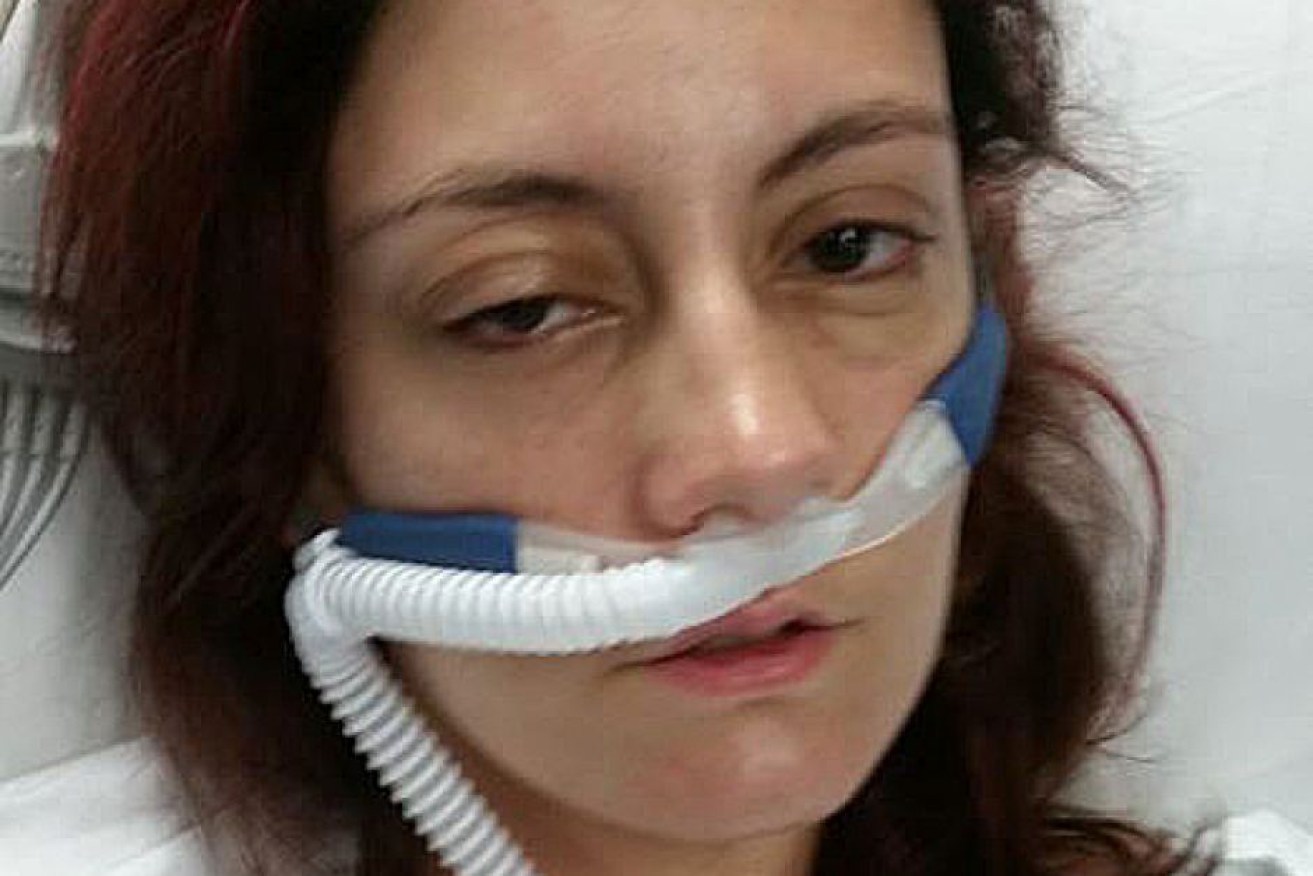Flu strikes down more than 183,000 people, and it’s not only the elderly being hit

Nurse Amanda Nix had the flu and was later diagnosed with pneumonia. Photo: Amanda Nix
Registered nurse Amanda Nix is strong and athletic, training in the gym four times a week.
Last year she competed in the 20-kilometre obstacle challenge Tough Mudder.
But several weeks ago she came down with the flu.
When the mother of two started feeling nauseous, with her heart skipping beats and racing, she reached for her phone and called an ambulance.
“It’s strange picking up the phone and calling triple zero because as a nurse, you wouldn’t normally do that,” she told 7.30.
She was rushed into emergency at Sydney’s Nepean Hospital.

Amanda Nix said it felt strange having to call an ambulance for herself. Photo: Facebook
“I think I’d blacked out and they were rushing me over to the rescue bay at that point. I had become unresponsive.”
She was then diagnosed with pneumonia.
Ms Nix is just one of hundreds of Australians who have been treated in hospitals for flu this year.
‘I didn’t think it was that bad’

Daniel Lukan with daughter Grace, who was hospitalised with the flu. Photo: ABC News
Another is Grace Lukan, an eight-year old from Bundaberg, Queensland. Her condition became so critical she was flown to the children’s hospital in Brisbane.

Grace Lukan, eight, was struck down by the flu. Photo: Supplied
“I didn’t think it was that bad,” her father Daniel Lukan said.
He has spent every day since by her bedside.
“It’s been overwhelming. I’ve gone from being at home with my daughter feeling a little bit sick to being by myself, visiting her every day – next to a hospital bed watching needles go in, watching tubes come out, her being in excruciating pain the whole time.
“[It is] daunting, terrifying.”
Doctors told 7.30 that Grace’s cerebral palsy may have made her more susceptible, but that what happened to Grace could happen to any child.
“I think parents should trust their gut feeling how sick their child is,” Dr Luregn Schlapbach said.
With health authorities confirming another death from flu in Queensland on Wednesday, the number of infections this season has risen past 183,000.
Official figures reveal 384 people have died this year.
Based just on infections it is the second-worst flu season in recent years. In 2017 there were 233,453 laboratory confirmed cases and 745 deaths.
Federal government data reveals the average age of death is in the mid-80s, but what is shocking even health professionals is how fast the flu can strike down the very healthy.
When flu is fatal for the young and healthy

X-rays show someone with moderate flu on the left and someone badly affected with flu on the right. Photo: Supplied
“If you look at a moderate flu the lung is completely clear. But if you look at a severe flu the lung is completely wiped out,” said Dr Benjamin Tang, head of Nepean Genomic Research Group, which works with patients at Nepean Hospital’s intensive care unit.
In the severe flu X-ray, the lung damage has been brought about by white blood cells called neutrophils, which are the body’s first responders to flu.
But in research just published in the journal Nature, Dr Tang explains why in some people the neutrophil response goes too far and can be fatal for the young and healthy.
He and his team at the Westmead Institute are now attempting to create a blood test to determine which flu victims are most vulnerable.
“Our research is to work out exactly how that process happens, in which patient it happens, and how do we target the key element of that process so we can develop therapy [and] hopefully have a treatment to target neutrophil.”
Missed vaccination
His test to measure vulnerability is still years away, so for now health authorities advise everyone to get vaccinated, which this year Amanda Nix forgot.
“I do it every year and this year I honestly don’t know what happened. I missed the mass vaccination day at work and then I got a cold. I never got back around to doing it,” she said.
She has returned to work as a nurse.
“I’ll definitely keep a better eye on people because you can deteriorate so fast … I will be a better nurse for it absolutely, a lot more empathetic. I’ve been there now.”
–ABC








